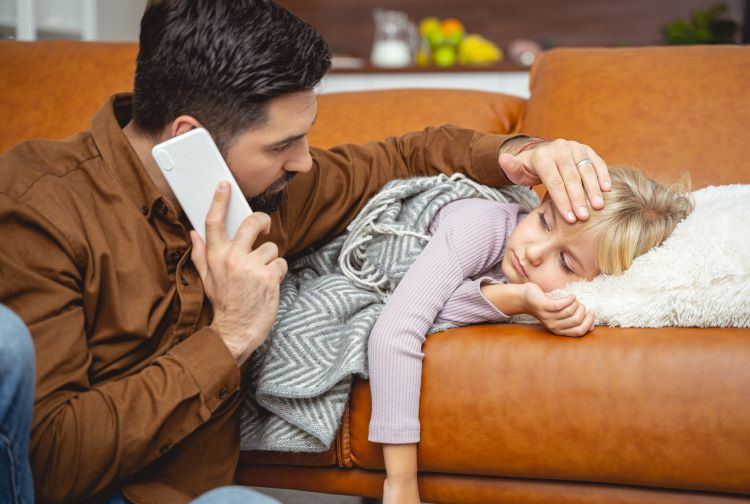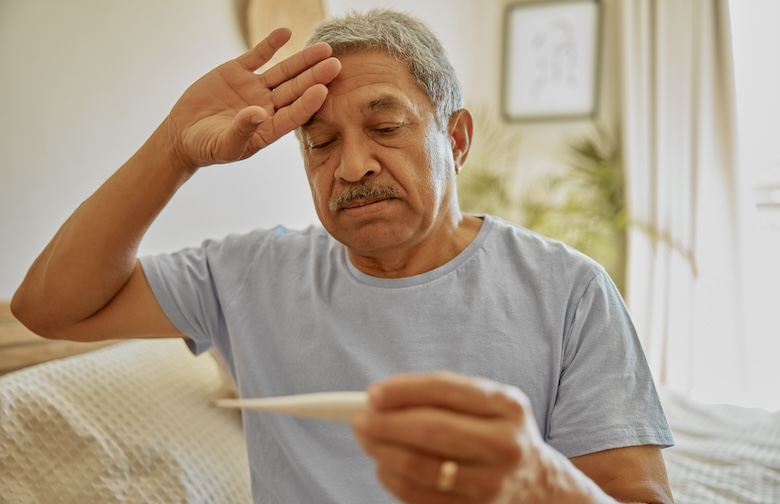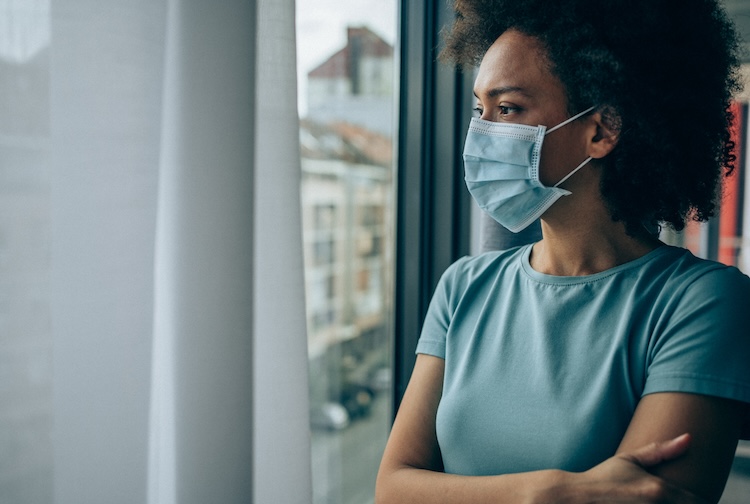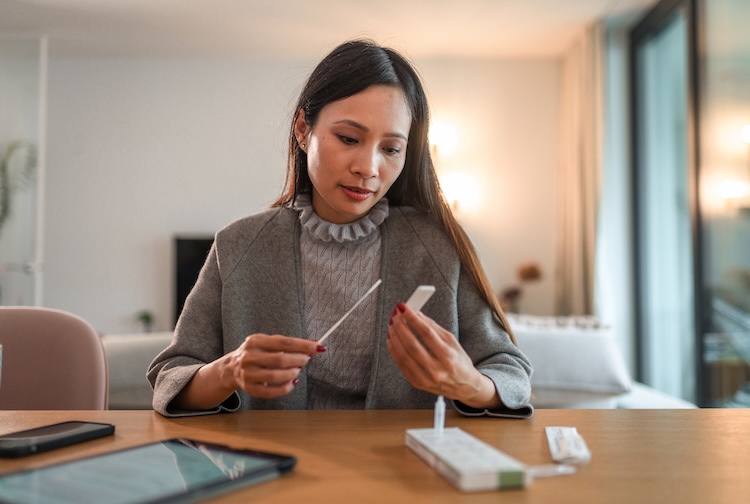
‘Mystery illness’ in kids — Is it related to COVID-19?
May 28, 2020
Dr. Emily Godbout, infectious disease specialist and epidemiologist, answers some important questions about this condition.
Can you describe the typical response that children have to COVID-19?
The good news is that the vast majority of children infected with COVID-19 have a mild clinical course. Children can be asymptomatic, meaning that they don’t have any symptoms, or they may have mild to moderate symptoms consistent with what we normally see with upper respiratory tract infections. These symptoms include fever, cough, runny nose, sore throat, nasal congestion, maybe body aches. A small percentage of children can have some diarrhea.
In comparison to adults, children are much less likely to have severe illness or complications and be hospitalized. That being said, we do know that severe outcomes have been reported in children with COVID-19. They can get very sick, although it is not common.
In these rare cases that are more severe, what is happening?
What you’re probably referring to is a lot of what we’ve seen in the media recently about a rare inflammatory response. There are reports of clusters of children with a rare and potentially serious inflammatory illness in Europe and the United States. In particular, we’re seeing these cases in New York, but other states have reported cases as well.
These cases are still being investigated to determine if the rare inflammatory illness is directly related to COVID-19. Some children test positive for COVID-19 at the time that they’re screened for their illness, but some don’t. A large number of these children show antibodies for COVID-19, meaning that they may have been previously infected with the novel coronavirus. Doctors across the world, including here in the U.S., are working hard to learn more about this. This multi-system disease that we’re seeing may be a post-infectious inflammatory process, essentially a response from the immune system.
Many of the symptoms that have been described in these cases resemble those of a rare childhood illness called Kawasaki disease. Kawasaki disease is a clinical diagnosis — there’s no specific test or lab that we can use to detect it. It’s actually been around for decades and we’ve never known the etiology, or official cause, of it. We’ve always thought that there’s been an association with viruses, though we’ve never been able to directly prove that. The current multi-system process that’s being reported is a little bit different than what we normally see with Kawasaki disease. We have heard that the CDC is going to put out a case definition to better define the illness, so we’re definitely going to be on the lookout for that.
In general, some of the reported symptoms have included prolonged high fever along with of some of the following symptoms: red eyes, rash, severe belly pain and cracked red lips, among others. There can be a wide range of inflammatory responses our bodies can have to different triggers. Sometimes those triggers are viruses, and I think that might be what we’re seeing.
How rare are these inflammatory responses?
So far they really do appear to be rare. The number of reported cases worldwide has been small, although that could certainly change as health systems learn a little more about what to look for. Currently in the U.S., the greatest number of reported cases has been in New York State. I believe they’re up to 90-100 cases. There have been a few cases reported in other states, such as Louisiana, Massachusetts, Mississippi and California. There have also been a few cases reported in European countries. Right now, we’re learning a lot more about this process, but we do still believe that it is rare.
How are the symptoms treated in kids?
If there’s concern that a child has met the criteria for one of these infectious processes, treatments include supportive care, such as fluids and oxygen, and medical treatments, which vary and include medications that can have an effect on the immune system. One example is intravenous immunoglobulin, also known as IVIG, but there are other medications that can help dampen the body’s immune response.
Again, some of these inflammatory processes in children existed prior to COVID-19, so doctors across the world and here locally have experience and expertise in treating these types of things.
If parents think their child has COVID-19 symptoms, when should they go to the ER?
There’s really a list of things to look out for that would cause you to bring your child to the emergency room regardless of them having COVID-19 or not. Some of these things include difficulty breathing or breathing very quickly, an infant having difficulty feeding, inability to maintain hydration, severe belly pain, severe diarrhea or vomiting, lethargy, irritability or confusion — these are all reasons to seek care immediately. If your child is having high, prolonged fever for more than four days, and we define fever as 100.4 or greater, touch base with your pediatrician to discuss the situation further and figure out the next best steps.
Dr. Frank Petruzella, our chief of pediatric emergency medicine, offers some additional insight into when it’s important to seek emergency care.
Other than social distancing and staying home, what can we do to prevent the spread of this virus?
It’s really important to maintain all those good infection prevention strategies to help limit transmission of the virus. As a reminder, the main mode of transmission is person to person via respiratory droplets. These droplets are really big — they don’t linger in the air. Usually if someone coughs or sneezes they will land within 3-6 feet, which is why we highly encourage social distancing. Social distancing means to stay six feet or more away from another person. If you’re not able to accomplish that, the CDC does recommend wearing cloth masks. We don’t recommend cloth masks for children under the age of 2.
In addition to social distancing we want to make sure that we’re practicing really good hand hygiene and keeping the high-touch surfaces in our homes clean. Routine cleaning products in your home will kill the coronavirus.
Is there anything else we should know related to COVID-19?
I know we’re seeing a lot of information on the news about this inflammatory response in kids, and it can be really scary for parents and children. I think part of the reason we’re seeing these alerts come out is really just to make people aware. This situation is rare but it can be serious, so it’s a way to let people know what to look out for. But again, the vast majority of children do have a mild clinical course.
Here at CHoR, we’ve been working around the clock to make sure that our clinics and hospital are infection-free and safe for your children, our workers and our community. We are prepared with the necessary equipment and supplies so if we do see any children with COVID-19 come in, or any children with COVID-19 with this rare inflammatory process, we’re ready to take care of them. So take a deep breath, hug your babies and continue practicing good social distancing and hand hygiene to minimize your risk for exposure
The last thing I’ll say is that it’s still very important for your children to receive their routine vaccinations, especially if they’re under 24 months of age. That’s when the bulk of vaccinations occur, and we want to make sure we’re keeping up with that so that we don’t have a vaccine-preventable illness on top of this COVID-19 pandemic.



